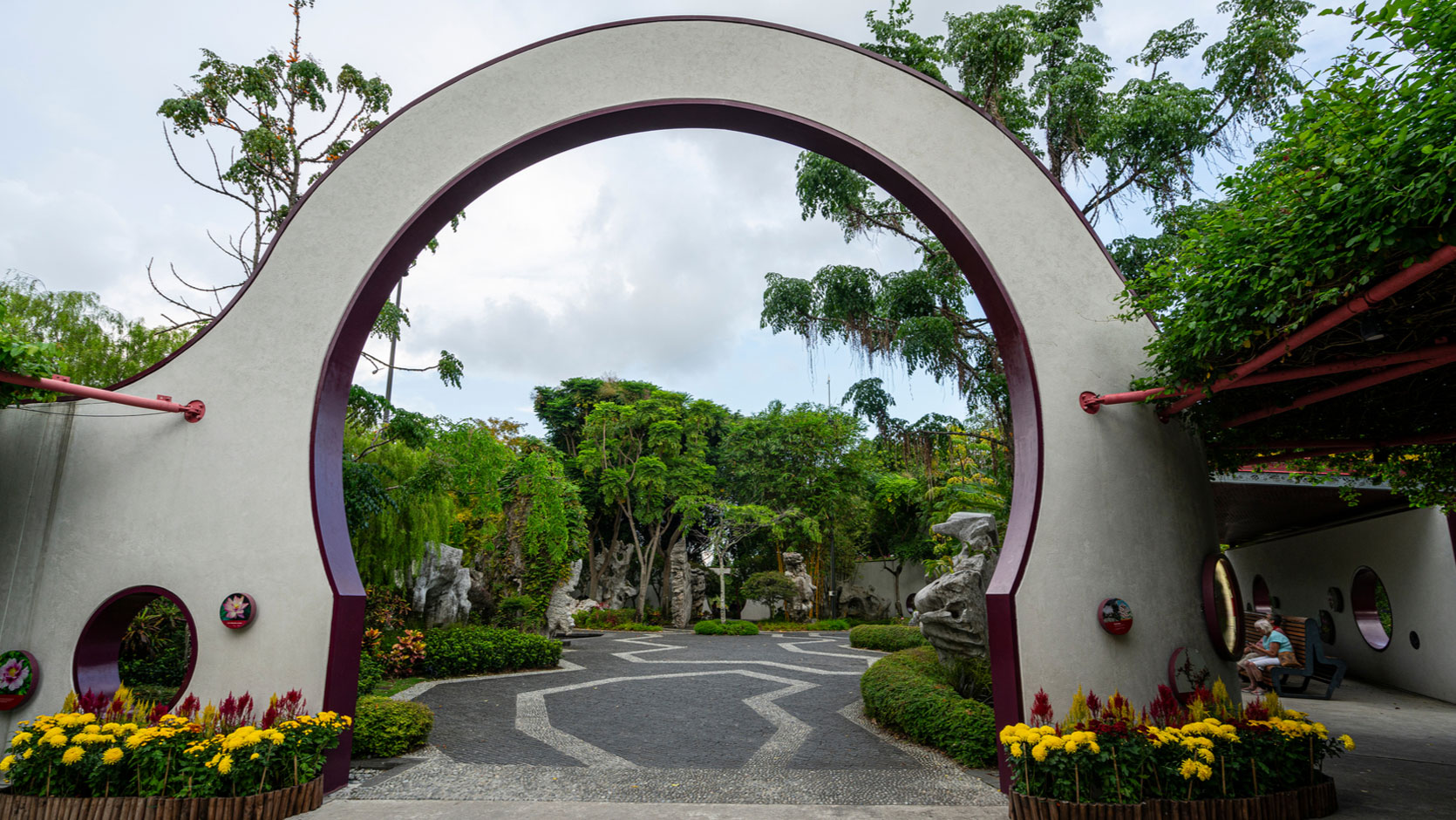Heritage Gardens - Colonial Garden
The colour palette of the Colonial Garden is a nod to Singapore’s history as a British colony. The black and white verandahs and frangipani trees bearing white flowers are inspired by the colonial houses of the early 1900s.
The plants here tell the tale of plantation agriculture in Singapore. The success and failure of specific cash crops helped to shape our local economy in the earlier days.
 Aerial view of the Colonial Garden
Aerial view of the Colonial Garden

Rubber
Rubber, a precious raw material, is made from the sap of the rubber tree.
Henry Ridley, Director of the Singapore Botanic Gardens from 1888 to 1911, promoted the commercial cultivation of rubber in Singapore. He refined the herring-bone method of tapping rubber trees which allowed sap to be harvested without harming the plant!
In the 1930s, rubber plantations took up approximately 40% of Singapore’s land area to meet the growing demand for rubber by the car tyre manufacturing industry.

Nutmeg
The spices, nutmeg and mace, are products of the nutmeg fruit. Nutmeg is derived from the seed and mace, from the seed covering.
Introduced to Singapore by Sir Stamford Raffles, nutmeg was grown commercially for almost 30 years despite being rather unprofitable!
The sculpture, Nutmeg and Mace, by Kumari Nahappan, stands in front of ION Orchard along Orchard Road. It is a reminder of the site’s past as a nutmeg plantation in the 1830s.
Look out for these historically significant plants the next time you take a stroll through the Colonial Garden!
Written by: Stephanie Dhillon, Assistant Director (Education, Programming & Events)
Stephanie is apparently a millennial but feels more like a Gen-Xer. She spends most of her days designing education programmes for the young and young at heart and the rest of her time running after her brood of children.



